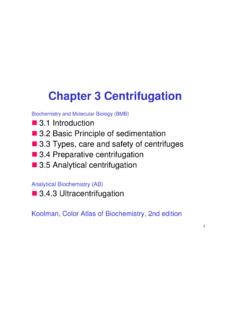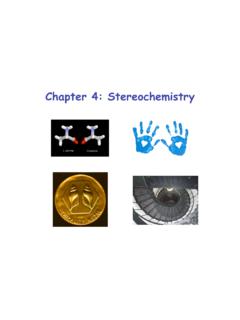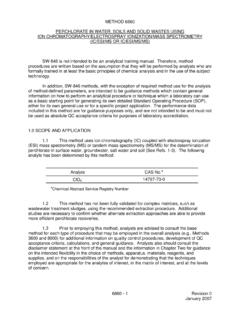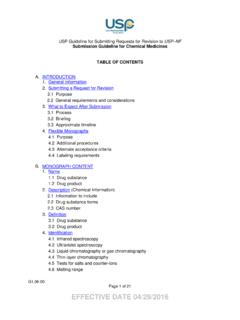Transcription of ANALYSIS OF ACCELERANTS IN FIRE DEBRIS BY …
1 ANALYSIS OF ACCELERANTS IN FIRE DEBRIS BY CAPILLARY GAS LIQUID CHROMATOGRAPHY ANTHONY D. CAFE B. APP. SC. (HONS). (NSWIT) DEPARTMENT OF MATERIAL SCIENCE UNIVERSITY OF TECHNOLOGY SYDNEY JUNE, 1988. The experimental work involved in this project has been aimed at developing an understanding of the problems likely to be encountered during the routine ANALYSIS of fire DEBRIS where the analytical technique is capable of detecting approximately one- microlitre of an accelerant. This high sensitivity is achieved by analysing with Capillary Gas Liquid Chromatography a dynamic headspace extract of the fire DEBRIS .
2 Capillary columns are being used more extensively in ANALYSIS because of their greater resolving power as compared to packed columns. They have been slowly accepted in routine fire DEBRIS ANALYSIS but were used exclusively throughout the project and were found to give more information in the chromatograms to aid their interpretation. There has also been reservations about using techniques that are capable of detecting 1 pL of accelerant because of the questions of the normal background levels of the ACCELERANTS , the possibility of contamination and the interpretation of the chromatograms and these three areas were investigated.
3 Background levels of ACCELERANTS on various materials were monitored, areas where the accidental contamination of the sample is possible were identified and alternative techniques proposed and chromatograms using capillary columns of various ACCELERANTS , synthetic and household materials are presented which would aid the interpretation of a samples' chromatogram. The chemical characteristics of these materials were also investigated using specific ion monitoring of the chromatographic ANALYSIS . The efforts of the forensic laboratory are reliant on the quality of the samples provided so the suitability of a sampling aid the "Sniffer" was evaluated and the insimment's shortcomings are discussed.
4 Techniques of identifying gas odourants utilising the equipment used for fm DEBRIS ANALYSIS are also presented which would assist the investigation of explosions. The project also investigated the problems of the analytical discrimination of ACCELERANTS when using dynamic headspace ANALYSIS which would aid the interpretation of the chromatograms. Static headspace ANALYSIS was also examined using Tenax absorption tubes and the method could also be used in the laboratory to enable greater flexibility of operation.
5 "Our acts are attached to us As its glimmer is to phosphorous. They consume us, it is true, But they make our splendour." Andre Gide ACKNOWLEDGEMENTS; This project was conducted in the Geronimo Fire Investigation Laboratory at the University of Technology, Sydney. The laboratory is managed by Insearch Ltd and was initially funded with a generous grant from the and Insurance Companies. I would like to express my deepest gratitude to these companies for their financial and continual support and in particular the for their scholarship, which allowed me to financially survive to persist with the project.
6 The driving force behind the laboratory is my co- supervisor Dr. MacMillan, Head of the Department of Material Science. I would like to thank Rob for his vision, resilience and inspiration. My other co- supervisor, Dr. Sharp, Senior Lecturer of the Department of Chemistry has impressed on me a sense of diligence and finesse in my work which I am greatly indebted to him for. Finally I would like to thank all the academic and technical staff at the University and in particular Mr. Jim Keegan for the comments and advice he gave.
7 TABLE OF CONTENTS: Page ABSTRACT ACKNOWLEDGEMENTS TABLE OF CONTENTS LIST OF FIGURES LIST OF TABLES chapter 1. introduction Arson Investigation Determining the Fire Cause The Nature of ACCELERANTS Sampling at the Fire Scene Control Samples Use of the "Sniffer" at the Fire Scene The Importance of Accelerant ANALYSIS Fire DEBRIS Extraction and ANALYSIS Extraction Techniques Properties of Absorbents Desorption Techniques Analytical Techniques (0 Principle of CMAF'JTR 2. THE EXPERIMENTAL WORK OBJECTIVE The Extraction Equipment The Analytical Equipment chapter 3.)
8 EXPERIMENTAL RESULTS AND DISCUSSION Sampling with a Sniffer Contamination of Samples Precontamination of Containers (0 ANALYSIS of Empty Cans (ii) Cleaning of Cans Contamination During Transpon and Storage Contamination During ANALYSIS (0 Investigation of the Water Trap (ii) Gas Transfer Line Material (iii) Cleaning of the Gas Transfer Lines (iv) Syringe Cleaning Procedures. Discrimination During Extraction. Thermal Desorption Using Tenax (0 ANALYSIS of Petrol (ii) ANALYSIS of Ethanol Detection of Gas Odourants Investigation of a Suitable Absorbent for the ANALYSIS of Gas Use of Dragar Tubes OnSite to detect Gas Odourants.)))
9 Interpretation of Results Background Levels of ACCELERANTS ANALYSIS of the Common ACCELERANTS (0 Petrol (ii) Petrol Additives (iii) Kerosene (iv) Mineral Turps (v) Diesel ANALYSIS of the Industrial Solvents (i) Lacquer Thinners (ii) Methylated Spirits (iii) Shell Solvents ANALYSIS of Common Household Products and Materials (i) Floor Tile Glue (ii) Varnished Wood (iii) Motor Oil (3 Vegetable Oil (v) Aerosol Sprays - Mortein & WD-40 ANALYSIS of Burnt Synthetic Materials (0 Nylon (ii) Polyvinylchloride ( ) (iii) Polvethvlene (ivj ~oi~rd~ylene (v) Polystyrene (vi) Rubber backed carpet (vii) Rubber floor tiles chapter 4.))))
10 CONCLUSIONS BIBLIOGRAPHY APPENDIX 1 CHROMATOGRAMS OF THE INDUSTRIAL SOLVENTS. LIST OF FIGURES; Extraction Equipment Schematic Diagram of Dynamic Headspace Extraction Equipment Empty Can Chromatogram Lined Can vrs Petrol Chromatograms Plastic Bag Chromatogram Diesel extracted and sampled at 15, 30, 60 and 90 minutes vrs Diesel Chromatograms Thermal and Solvent Desorption of Petrol Chromatograms Thermal and Solvent Desorption of Ethanol Chromatograms Town Gas Chromatogram Soil (Ex Motor Yard) vrs Petrol and Diesel Chromatograms Fresh and Evaporated Petrol Chromatograms Ion Scans of Petrol Chromatogram Lead Scans of Petrol Chromatogram Lead Scans of Extracted Petrol Chromatogram Leaded and Unleaded Petrol Chromatograms Kerosene Chromatogram Ion Scans of Kerosene Chromatogram Evaporated Kerosene vrs Diesel Chromatograms Fresh and Evaporated Mineral Turps Chromatograms Ion Scans of Mineral Turps Chromatogram Diesel and Evaporated Diesel Chromatograms Ion Scans of Diesel Chromatogram Floor Tile Glue vrs Petrol










